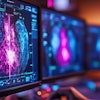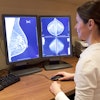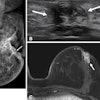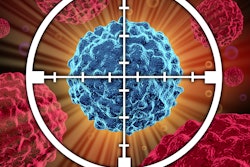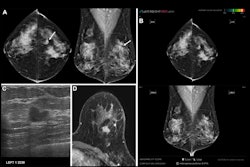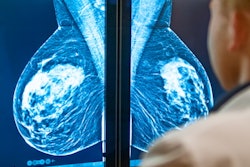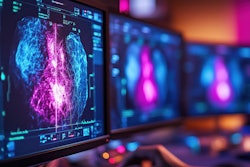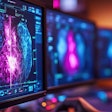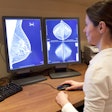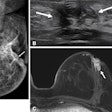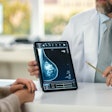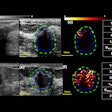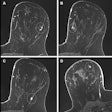The use of AI-computer aided detection (AI-CAD) shows promise for improving breast cancer detection, researchers have reported.
"[Our study found that] AI-CAD shows potential to improve breast cancer detection in screening programs and to support radiologists in mammogram interpretation," wrote a team led by Yun-Woo Chang, MD, of Soonchunhyang University Seoul Hospital in Seoul, Korea. The group's findings were published October 28 in Radiology: Artificial Intelligence.
Mammography is the gold standard for breast cancer screening, the group noted. The advance of AI-CAD has improved the interpretation of mammograms, and at times its performance "exceeds that of radiologists in detecting occult cancers while reducing false positives." But "the performance of AI-CAD algorithms and their abnormality scores in digital mammography-based screening remains uncertain," the team wrote.
To clarify the question, the researchers investigated the characteristics of breast cancers detected and missed by AI-CAD during screening mammography via a secondary analysis of data from a trial called Artificial Intelligence for Breast Cancer Screening in Mammography (AI-STREAM) that was conducted between 2021 and 2022. They categorized AI-CAD results into nine subgroups based on abnormality scores organized by 10% increments, then calculated the positive predictive value of recall (PPV1) for each of these subgroups and by breast density, and compared AI-CAD scores with mammographic and pathologic features.
The AI algorithm the team used was Lunit's Insight Mammography version 1.1.7.1. It identifies potential abnormalities on mammograms using either a heatmap or grayscale map and assigns abnormality scores -- expressed as percentages ranging from 0% to 100% and generated for each craniocaudal and mediolateral oblique view. Abnormality scores of 10% or higher are considered positive, whereas those below 10% are classified as negative, the investigators explained.
The study included data from 24,543 women (mean age, 60 years) with 148 cancers confirmed by pathology after one year of follow-up. AI-CAD results were negative in 23,010 cases (93.8%) and positive in 1,535 (6.2%).
The group reported the following regarding AI-CAD's performance for detecting breast cancers on digital mammography:
Performance of AI-CAD for detecting breast cancers | |
Measure | Percentage |
| Positive predictive value of recall (PPV1) | 8.7% |
| Sensitivity | 89.9% |
| Specificity | 94.3% |
"[The] overall positive predictive value of recall of AI-based CAD was … slightly above the Breast Imaging Reporting and Data System screening benchmark," the researchers noted.
They also found that AI-CAD identified 3.4% (n = 5) of cancers missed by radiologists but missed 8.1% (n = 12) that were detected by radiologists on recall; that cancers missed by radiologists included characteristics such as asymmetry, distortion, and mass; and that the false negative rate for AI-CAD was 10.1% (these cases were more common in women with dense breast tissue).
"One reason for the higher false negative rate of AI-CAD [is that] unlike radiologists' interpretation of mammography, AI-CAD does not consider prior mammograms, which disadvantage AI-CAD compared with radiologists," the group noted.
The takeaway? AI-CAD can help radiologists with mammography interpretation, according to the authors, and "understanding the imaging and pathologic features of cancers detected or missed by AI-CAD may enhance its effective clinical application," they concluded.
The complete study can be found here.

